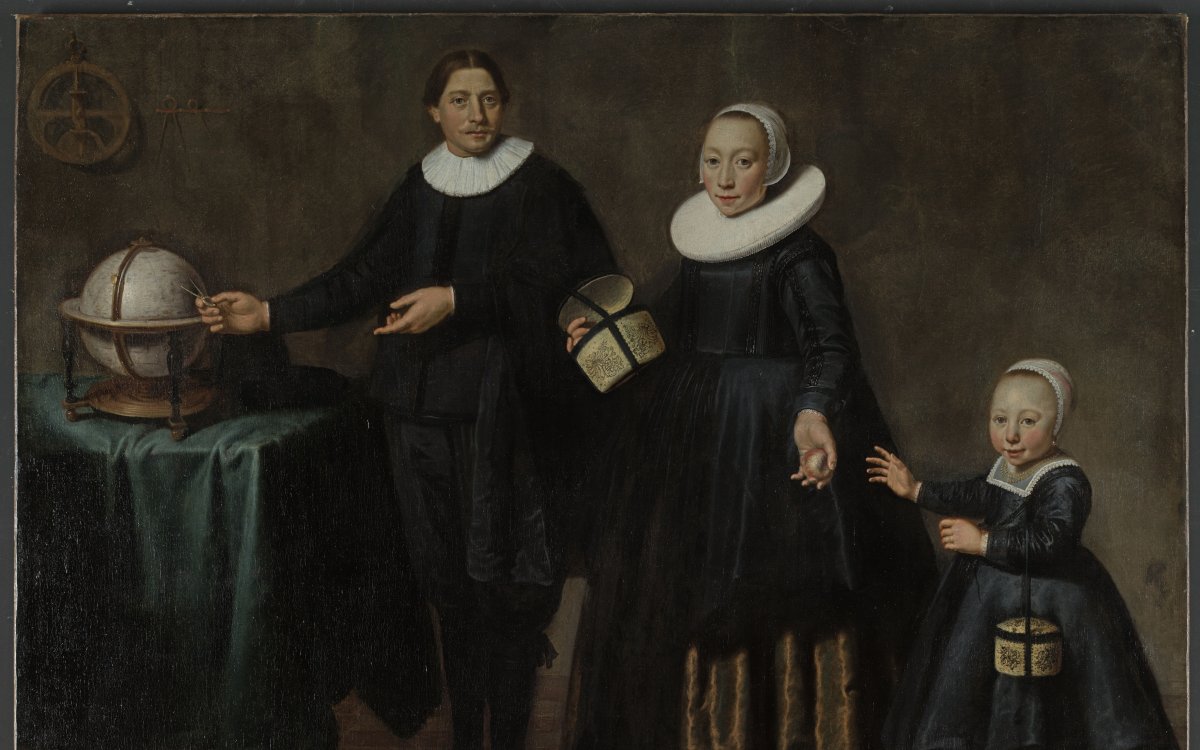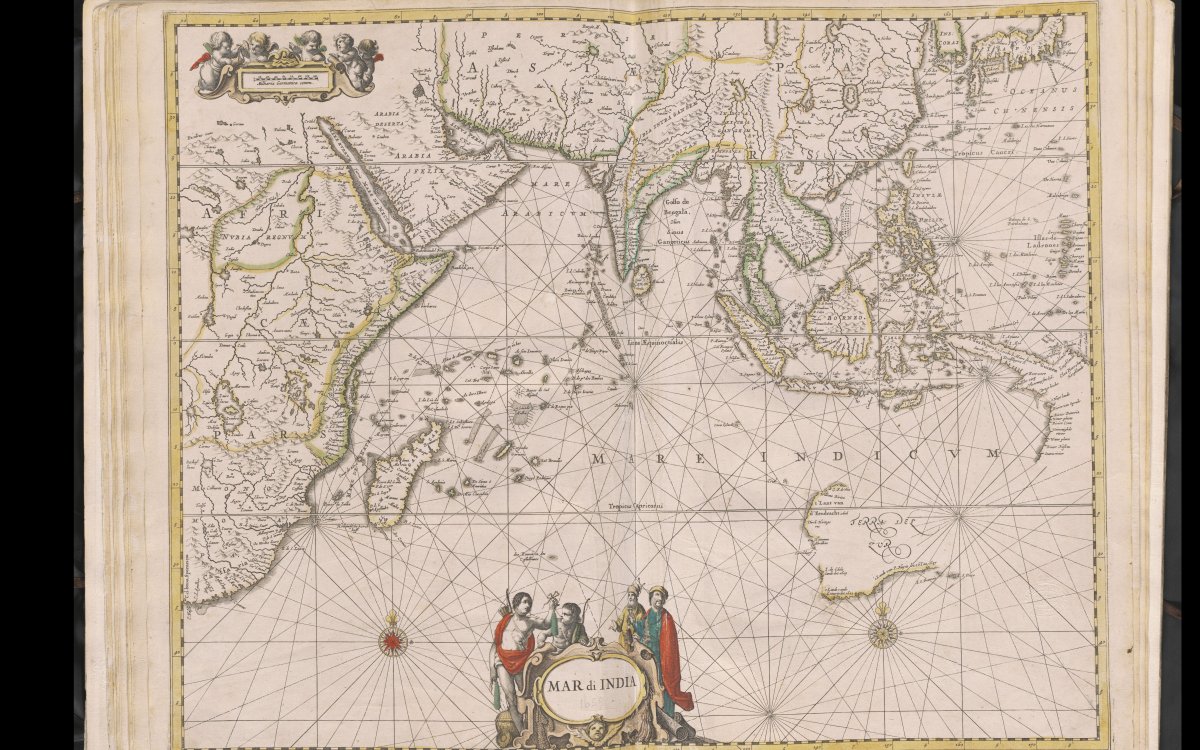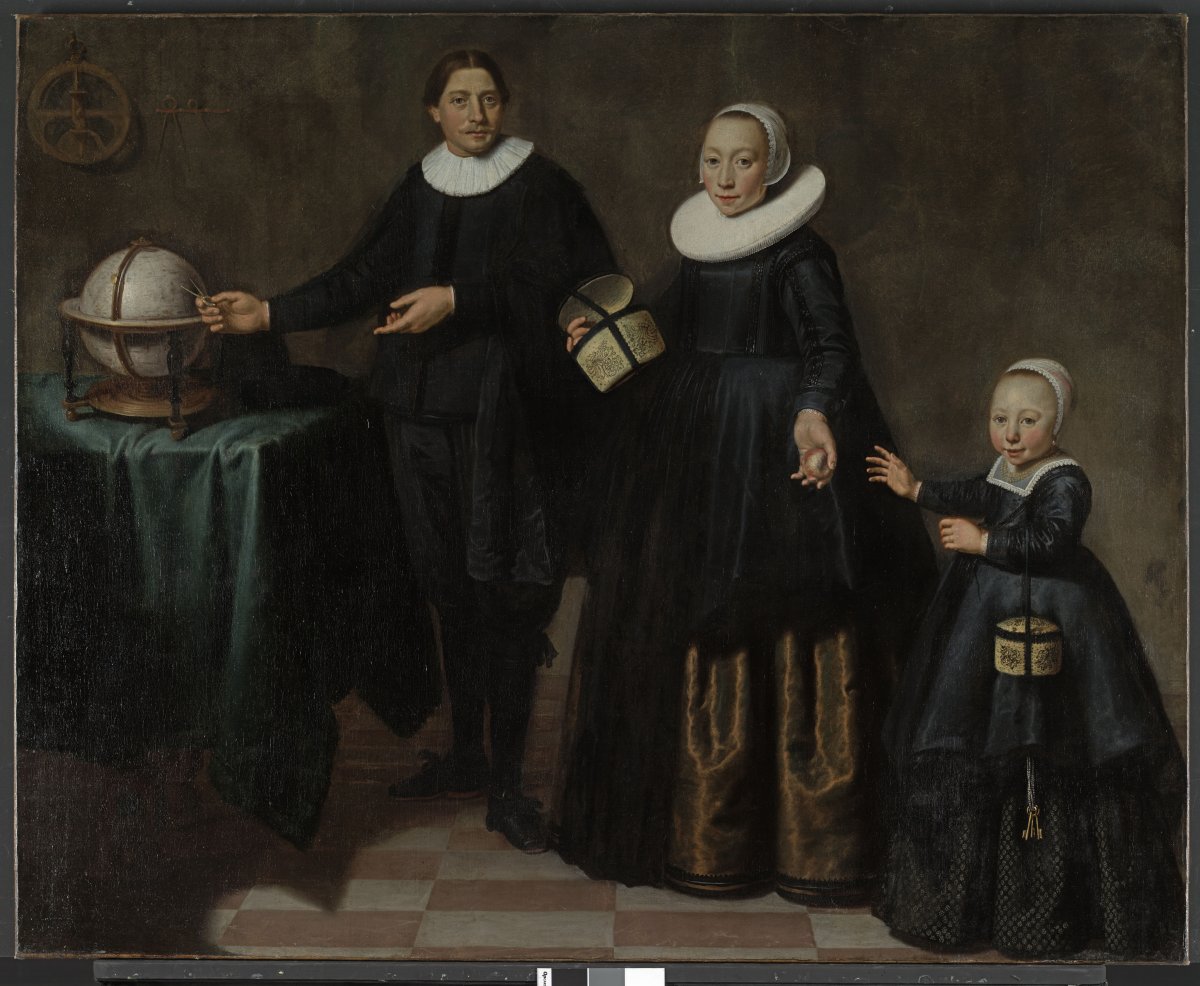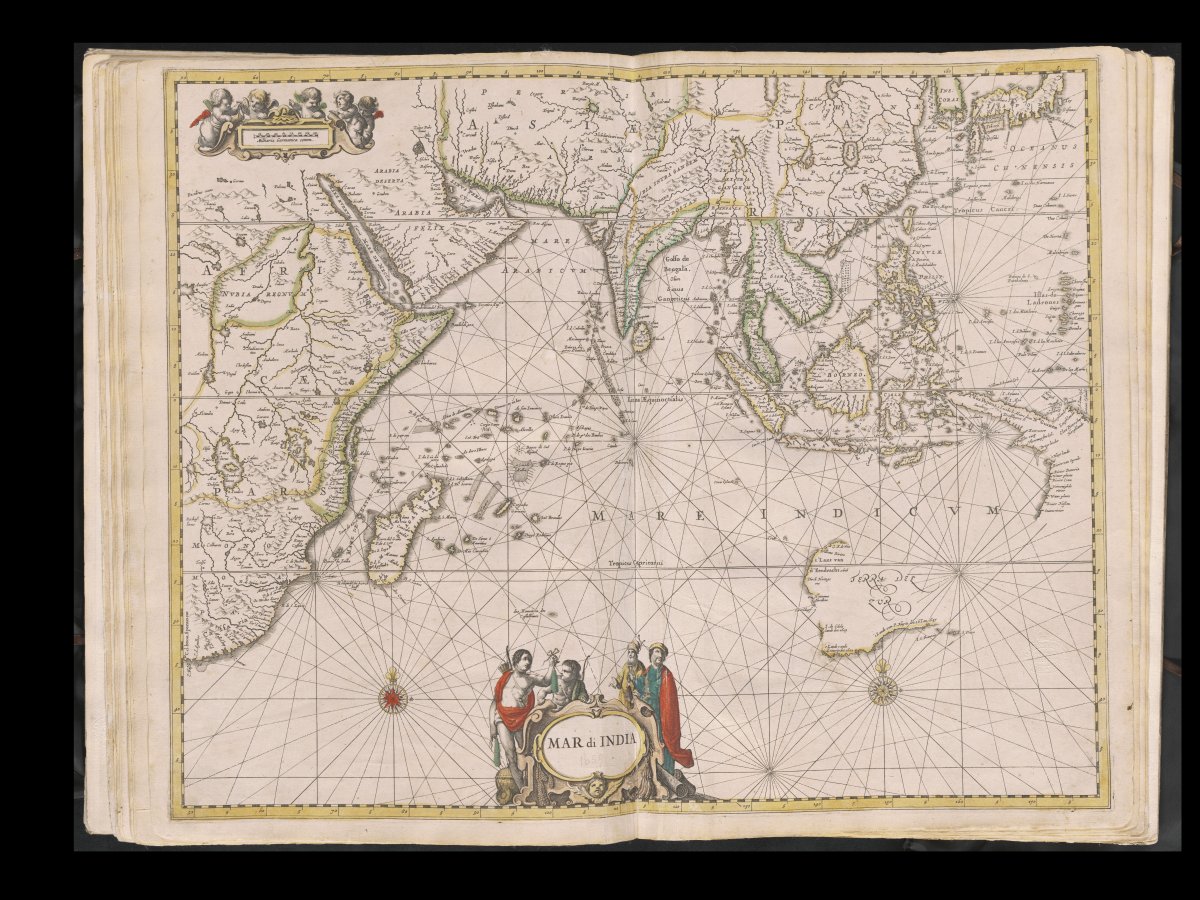This seventeenth-century portrait is of the famous Dutch explorer Abel Tasman (c. 1603–1659) and his family. Believed to have been painted in 1637 by Dutch artist Jacob Gerritsz Cuyp (1594–c. 1651), it portrays Tasman, at the time a captain of a Dutch East India trading vessel, with his second wife and his daughter from his first marriage.
The arrangement of the three figures is symbolic. As Tasman motions towards a globe, as if introducing his sailing skills to the viewer, his wife passes an apple to her stepdaughter, representing the transmission of knowledge from an older to a younger generation.
In 1642, Tasman was the first European to see Tasmania; the island was later named after him.

Cuyp, Jacob Gerritsz, 1594-approximately 1651. (1637). Portrait of Abel Tasman, his wife and daughter [picture] / [Jacob Gerritsz Cuyp]. http://nla.gov.au/nla.obj-138417248
1. Display this painting for your students. As a class, discuss the following (using the background information as a guide):
- What relationship might the people in the painting have to each other?
- When do you think this picture might have been painted?
- Why do you think the man is pointing to a globe of the world?
- Why do you think the artist chose the particular colour for the table cloth?
- What might the tools on the wall be used for?
- Why might the woman be passing an apple to the child?
After exploring these questions, tell the students the title of the painting and use the background information to provide them with details about Abel Tasman. Ask the students which Australian state is named after the explorer.
Invite your students to create a self-portrait (using any medium). Remind students to think about the objects selected by the artist Jacob Gerritsz Cuyp to convey information about Abel Tasman, and ask them to include objects in their self-portrait that will convey something about themselves to the viewer.
2. Share the following source with your students. It is a map created at about the same time the portrait of Abel Tasman was painted and he was undertaking his explorations. Ask your students to use the map to explain what was known at this time about the region of the world where Australia is located? Students may like to compare the map with a contemporary one.

Jansson, Jan, 1588-1664 & Doncker, Hendrick, 1626-1699. Zee-atlas ofte water-waereld. (1659). Mar di India [cartographic material] / [Jan Jansson]. http://nla.gov.au/nla.obj-230757141
This is one of 20 ‘maps of discovery’ in Doncker’s (1626–1699), The Sea Atlas, published in Amsterdam in 1659. The maps in the atlas include all the lands in the known world and they guess at what might lie beyond them. Sometimes those guesses were wrong, but sometimes the sketch of the unknown turned out to be surprisingly correct. On the map Mar di India, there is a recognisable outline of the west coast of Australia—a place which was a mystery to the Dutch at that time.
The period when Doncker was drawing his maps has come to be known as the ‘golden age’ of Dutch map making. For sailors in the seventeenth century, Doncker’s maps were essential tools to help them in their quest to unlock the secrets of the globe.
This is one of 20 ‘maps of discovery’ in Doncker’s (1626–1699), The Sea Atlas, published in Amsterdam in 1659. The maps in the atlas include all the lands in the known world and they guess at what might lie beyond them. Sometimes those guesses were wrong, but sometimes the sketch of the unknown turned out to be surprisingly correct. On the map Mar di India, there is a recognisable outline of the west coast of Australia—a place which was a mystery to the Dutch at that time.
The period when Doncker was drawing his maps has come to be known as the ‘golden age’ of Dutch map making. For sailors in the seventeenth century, Doncker’s maps were essential tools to help them in their quest to unlock the secrets of the globe.
The explorations of Abel Tasman and others enabled the first maps of the entire Australian continent to be published between 1811 and 1814.
Explore the design features (e.g. labels, illustrations, navigation lines) of the Mar di India map with your students and challenge them to design their own map of Australia using a similar style.
For further information on, and activities about, the mapping of Australia, visit the ABC Splash digibook Mapping the Australian Coast.
Other Treasures sources that relate to the concepts explored in this source include: Endeavour Voyage

